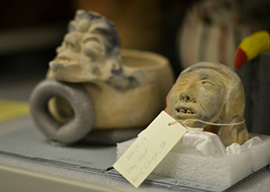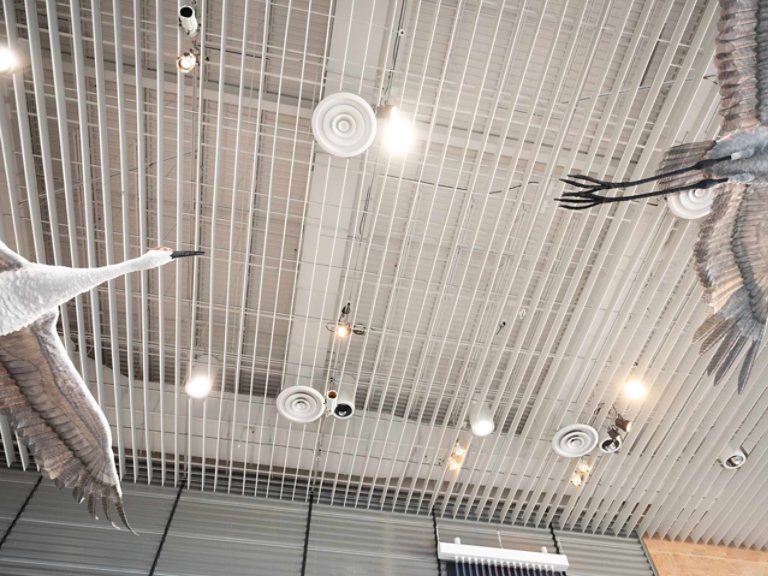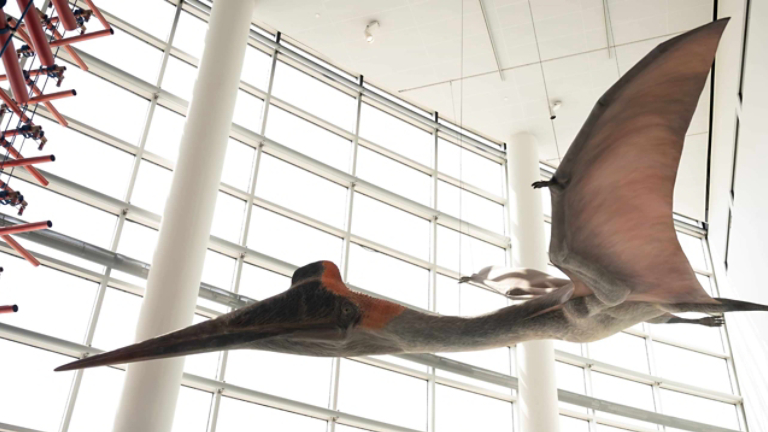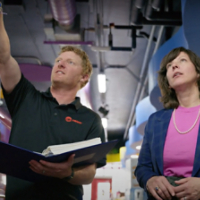Customer Story
Heat Recovery at Science Museum of Minnesota: Reducing Costs and Carbon Footprint
The Science Museum of Minnesota embraced a holistic approach to building comfort with Trane's heat recovery solutions. Discover how the museum's heat recovery retrofit captured waste heat, significantly lowering heating bills by 75% and saving nearly $300,000 annually.

Quick Facts
- Location
- St. Paul, Alberta, CA
- Industry
- Community Spaces
- Products
- Series R Helical Rotary Screw Chillers
- Topics
- Sustainability • Efficiency • Optimal Comfort • Thermal
The Challenge
With a mission to educate the public about science, engineering, and technology, and make science accessible and applicable to everyone, the Science Museum continuously seeks to create solutions to improve the human experience. To this end, the organization set objectives to lower energy costs and its carbon footprint, moving on a path toward net-zero where the total amount of energy used by the building would be equal to the amount of renewable energy created at the site.
“We have all sorts of spaces—Omnitheater, gift shop, exhibit halls, restaurants and catering facilities, exhibit and graphic production shops, meeting rooms and classrooms, and a parking ramp—that all have different energy needs,” said Todd Gray, assistant superintendent of facilities, Science Museum of Minnesota. “Finances are always a big thing when you run a building, and there's never a building that has too much money. So being energy efficient is key.”
The Solution
The local utility company, Xcel Energy®, introduced the Science Museum team to a local mechanical consultant, who was achieving significant results in energy efficiency. The museum engaged the consultant to perform an analysis of their entire facility. The analysis showed the Science Museum’s electricity consumption to be 6.3 million kWh electricity annually, equivalent to the yearly electricity use of 800 households. The study also noted that this electricity degraded to 20 billion BTUs of heat energy and that the facility purchased 15 billion BTUs of heat energy annually.

“He asked us why we were throwing away an enormous amount of heat, and then buying a huge amount of heat,” said Patrick Hamilton, director of global change initiatives, Science Museum of Minnesota. “We were intrigued by the findings and that the Science Museum might have an opportunity to demonstrate new ways of operating more efficiently. Aligning with our mission, we embarked on a heat recovery retrofit that would allow us to save energy and use our own building as an exhibit.”
Taking a holistic approach to building comfort
With simultaneous heating and cooling needs all year round, many commercial buildings concurrently use both a cooling and heating system. The cooling system is used to discard heat generated from the large amounts of electricity used by the building to power everything from lights to computer servers. This electricity degrades into heat, which is commonly treated as waste and exhausted through the fan system. Heat recovery looks at a building’s HVAC as one system, allowing a building to use the heat it generates, rather than creating new heat by burning fossil fuel or running a boiler. The process extracts heat from areas where it is not needed and exports it to exterior walls in closest contact with the cold outside air. A heat exchanger is also used to temper fresh cold air brought into the building before it is pushed through the ventilation system to heat the building.
Meeting requirements with a high-efficiency solution
The mechanical consultant contacted Trane for heat recovery solutions. Trane worked with the consultant and the Science Museum to evaluate full- and part-load efficiency data of various options and develop a solution that would meet critical temperature and humidity control requirements and improve efficiency. Trane heat recovery chillers were deemed the most appropriate equipment for the Science Museum retrofit project based on their exceptional reliability and performance at higher lift, as well as the support system offered by the company.

Optimized for heat recovery, two high-efficiency Trane 160-ton Series R® (model RTWD) helical rotary chillers were installed to handle the Science Museum’s needs. The smaller RTWD chillers not only cool the facility but take the heat that already exists in the building and convert it to hot water, at temperatures up to 140 degrees, which is then used to heat the Science Museum. Rather than running two systems, the heat recovery chiller pumps the heat into places where it is needed, helping to keep peak energy usage down.
The Results
A heat recovery retrofit at the Science Museum of Minnesota allows the facility to capture and use heat they already own to lower heating load. The project has reduced the building’s hot water heating bills by 75 percent, resulting in savings of nearly $300,000 a year, for a payback of slightly over three years. The upgrade is also helping the environment by reducing the emissions and pollution that would have resulted from generating new heat energy.
“Our experience with Trane has been extremely positive from equipment selection and reliability to installation and the support we get now and expect in the future,” said Gray. “We have lots of energy needs and Trane has helped us optimize our systems, allowing us to be financially responsible to our donors and our community. By utilizing the waste heat that we were throwing away in a constructive manner to heat the exterior of the building, we are moving toward carbon neutrality. The project's been very successful.”
The project is also in direct alignment with the Science Museum’s mission to educate and help improve lives, with the venue using its building as a living lab to expand its teachings to real-world applications. “Large buildings use large amounts of energy, and there is enormous potential to dramatically reduce that energy consumption with economic, employment, and environmental benefits,” said Hamilton. “It’s a very powerful story, and a big opportunity to communicate to both professional and public audiences that heat recovery is not just theoretically possible, but practically feasible.”


